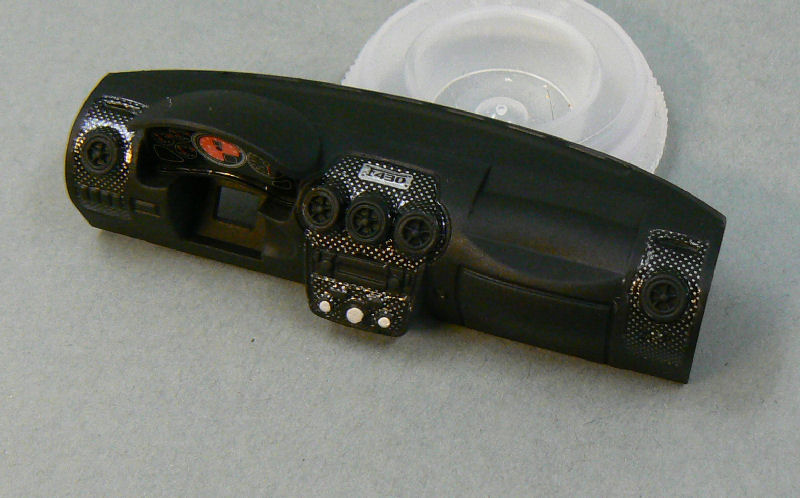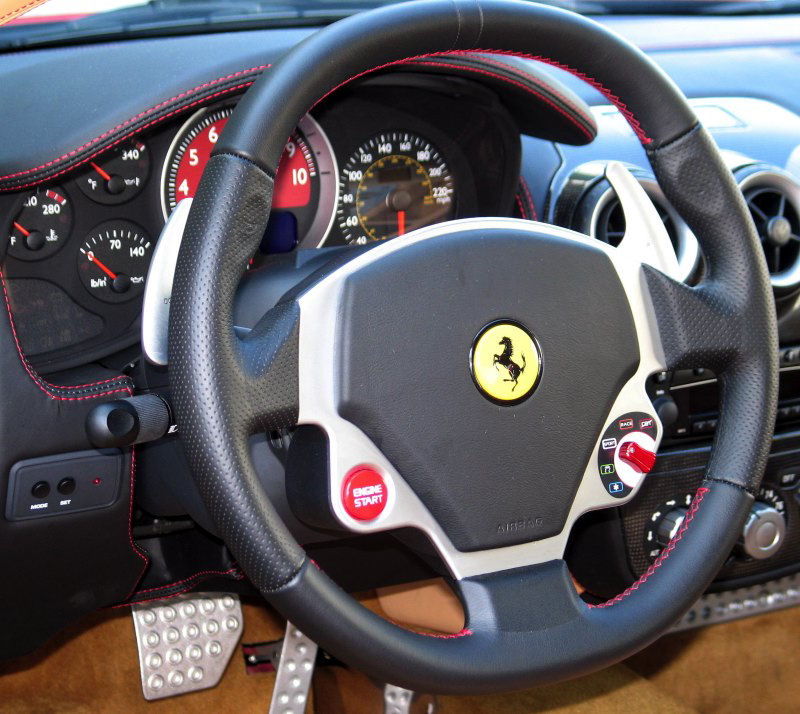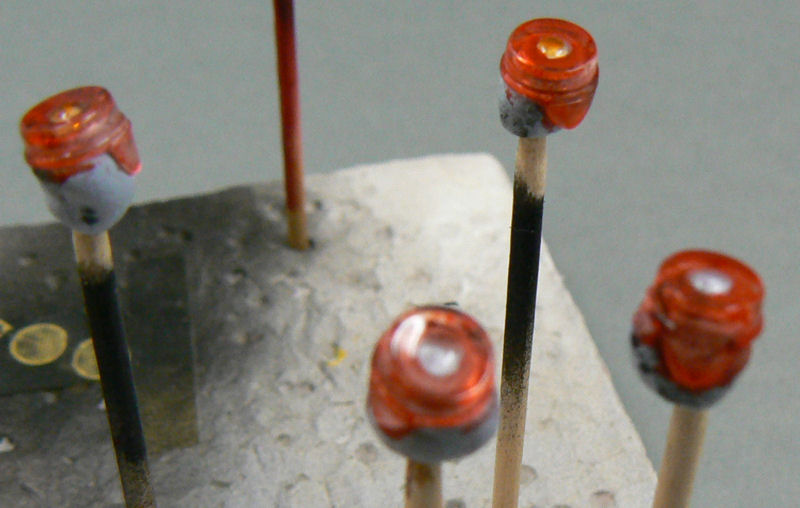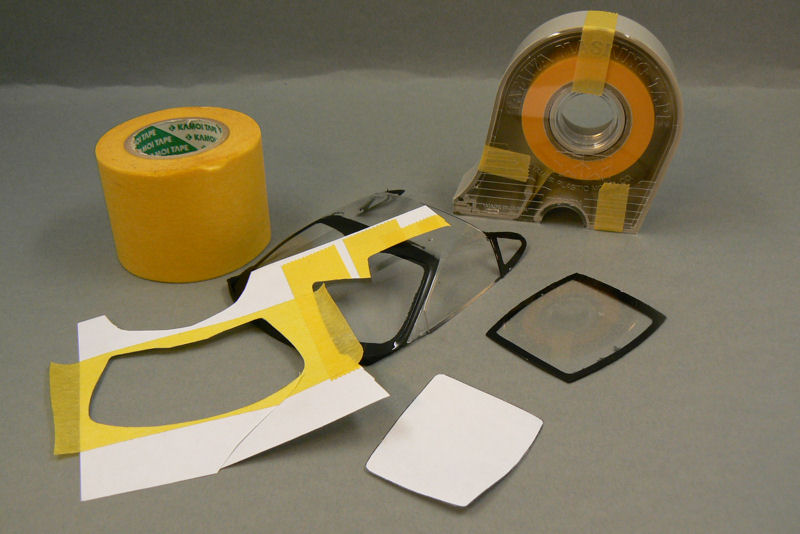I only spend about 3-4 hours per week on modelling so progress is quite slow. But there is progress. And in this update I'll show you how far I've gotten with this model.
The first part I want to show you is the dashboard of this car. Most of the interior had been finished already, but the dashboard and steering wheel were still some way from completion.
The dashboard and steering wheel were first painted black (semi gloss) with Tamiya X18.
After that I sprayed several fine coats of satin clear (a mix of Tamiya X22 clear and X21 flat base) on the dashboard and steering wheel to give it a kind of leathery look.
I wanted to model the dashboard according to this example:
As can be seen on the image above, there are several sections of carbon fiber on the dashboard.
I intended to simulate the pattern with composite fiber decals from Scale Motorsport. The pattern I used was 'plain weave pewter'.
I made templates of the parts I wanted to cover with Tamiya masking tape. And with these templates I cut out the required pieces from the Scale Motorsports decal sheet, and glued them on the dashboard using MicroScale decal Sol and Set.
Great stuff for getting the decals to conform to the curved shapes of the dashboard.
As can be seen in the last image, the application of the decals went not without some problems.
I had cut the decals slightly oversized, so I could trim the excess after application and thus guarantee that the decals would cover the intended parts completely. If you cut it exactly to size, I've noticed that for some reason the decals often don't fit perfectly. It's like they shrink slightly during application.
But in this case I let the decals dry slightly too long before cutting them to size. So I damaged the paint on the dashboard on several spots. The protective layer of clear didn't help much I'm afraid.
But luckily, the damaged spots could easily be repaired. After the decals had cured for several days, I brushpainted some MicroScale gloss clear on the carbon fiber decals to give it some shine.
Below is a picture of the, almost finished, dashboard. I only have to add some etched parts to the 5 ventilation ducts on the dashboard.
After I finished the dashboard I turned my attention to the steering wheel. The steering wheel has been nicely detailed by Fujimi. But it could have been better. For instance, the starter button was missing from the steering wheel. So I had to simulate the button with some red painted.
I used unthinned red paint from the Revell aquacolor range. As the paint is quite thick unthinned, it was the perfect solution for this smalle omission from Fujimi.
I tried to model the steering wheel according to the following example:
Note: Second picture is the steering wheel from the model...
Lights
With work on the interior almost finished I turned my attention next to the lights of the car.
This is how the front lights look on the real car:
I had already painted the lightpods for the front semi gloss black and put a few layers of satin clear on them.
Next I painted the indicatorlights orange with clear orange from Tamiya (X26) and painted the rim of the indicator lights chrome, using Alclad II chrome.
Final step was glueing all the parts together. For this I used MicroScale Kristal Klear, a glue that dries clear. Very convenient because some parts of the lightpods are made of clear plastic and if I had used regular modelling glue the parts would have become fogged.
Next in line were the rear lights. Pretty straightforward, they had to be painted with clear red and clear orange. In this case I again used clear paints from Tamiya (X26 and X27).
Windows
The most recent parts I've worked on were the windows of the car.
The outer rims of the windows should be painted (semi gloss) black. The windows themselves have some thin lines molded into them, denoting the boundaries for the black areas.
Normally that would have been sufficient for masking of the windows for airbrushing the black on.
But in this case I created the masks (from Tamiya masking tape) with the templates that were provided in the Crazy Modeler detail set I've been using in this build.
With these templates I created the masks, stuck them to the windows, masked of the rest of the windows and painted the required areas semi gloss black using Revell aquacolor.
And the final result was very pleasing:
I still have to remove some tape residue from the windows here and there and touch up a few spots, but otherwise the windows are finished.
Next taks to tackle will be the final preparation of the car body. After that, I'll paint the window seals, glue the windows to the body and wax the body to give it a nice shine.
Pictures of this step will be shown in the next update.












Comments
Post a Comment